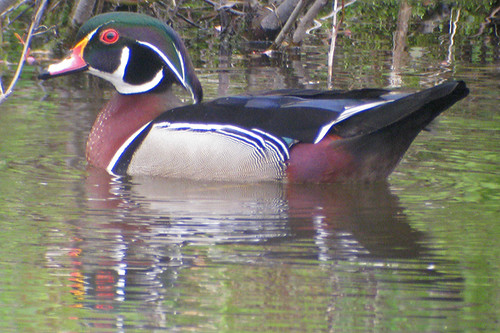 As the days grow steadily longer, spring is fast approaching and signs of spring are upon us. But before the leaves burst out and the colorful songbirds arrive in droves, a great migration of waterfowl is about to take place. Most of these plump-bodied water birds have their sights set far north of Vermont, but stop briefly in our ponds and puddles on their journey. Over two dozen species may pass through each spring, some colorful and some drab, but how do you tell them all apart?
As the days grow steadily longer, spring is fast approaching and signs of spring are upon us. But before the leaves burst out and the colorful songbirds arrive in droves, a great migration of waterfowl is about to take place. Most of these plump-bodied water birds have their sights set far north of Vermont, but stop briefly in our ponds and puddles on their journey. Over two dozen species may pass through each spring, some colorful and some drab, but how do you tell them all apart?For anyone who has painstakingly searched for warblers as they dart around in treetops, watching waterfowl will be a nice reprieve from the aches and pains of warbler neck (the syndrome that comes about from craning your neck upwards in order to look vertically for warblers above). Waterfowl tend to be sedentary, sitting still in the open water allowing for prolonged observation. They tend to be large, and have distinctive patterns that help identify them. But with many species, distinguishing them can be difficult.
One of the first steps towards deciphering ducks is to have the proper equipment. Binoculars are a must, but they will only allow you to see waterfowl that are nearby. A spotting scope can be an invaluable aide in identifying ducks even at great distances. The next step is to learn the most common ducks. The best way to spot other rarer species is to know that what you are looking at is not a Mallard! Can you tell which of the ducks below is a female Mallard?
To learn more about ducks and how to tell them apart, join us for the Better Birding Series on Monday, March 5 (program details below)
Better Birding Series: Deciphering Ducks
Monday, March 5, 6:30 p.m.@ First Baptist Church of Montpelier
Fee: $10
In time for the spring waterfowl migration, you'll get ducky. Think of this lecture as a "Duckumentary." You'll learn a simple approach to watching waterfowl and how to distinguish species in flight or when they're just sitting there in front of you. Featuring guest lecturer Larry Clarfeld of NBNC.
Better Birding Series: Deciphering Ducks
Monday, March 5, 6:30 p.m.@ First Baptist Church of Montpelier
Fee: $10
In time for the spring waterfowl migration, you'll get ducky. Think of this lecture as a "Duckumentary." You'll learn a simple approach to watching waterfowl and how to distinguish species in flight or when they're just sitting there in front of you. Featuring guest lecturer Larry Clarfeld of NBNC.

No comments:
Post a Comment